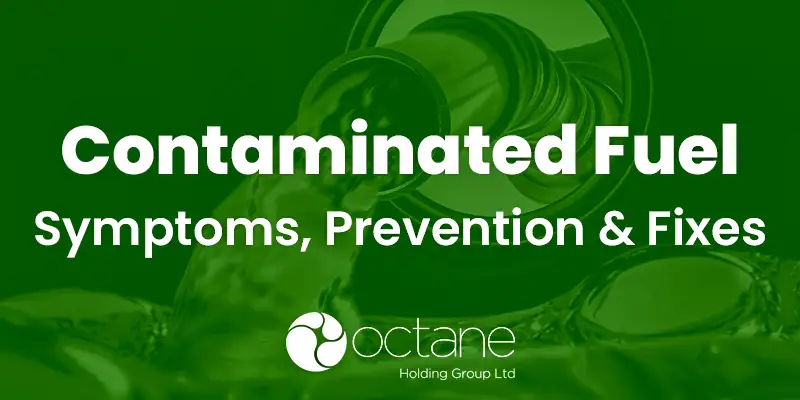Latest News
Keep up to date with latest news and insights from Octane Holdings

Contaminated Fuel Symptoms
Contaminated Fuel Symptoms: How to Spot and Treat Diesel Bug
Do you suspect your fuel is contaminated but aren’t entirely sure? Even with regular maintenance, contamination can still occur.
Knowing what to look for and acting quickly helps avoid costly issues with your vehicles, tanks, and fuel systems.
What Are the Main Contaminated Fuel Symptoms?
There are three key fuel contamination symptoms. Problems can occur in vehicles, tanks, and the fuel itself, tracing the issue’s source.
The earlier you spot symptoms, the faster you can act, preventing expensive damage to vehicles or underground storage tanks.
A regular preventive maintenance programme, including tank and fuel checks, is essential for early detection and effective treatment.
1. Engine Problems or Equipment Failure
One of the first signs of contaminated fuel can be engine or equipment issues, often noticed between regular maintenance checks.
Watch for sudden power loss, sputtering, poor acceleration, or involuntary speed changes. These are common warning signs of contamination.
Blocked fuel filters are another indicator. Frequent servicing may be required if contamination is affecting your vehicles.
If you notice these symptoms, fuel testing and a full tank inspection are critical to prevent further damage.
2. Erosion in the Fuel Tank
Severe contamination can cause physical erosion of the fuel tank itself. This is a serious warning sign.
If visible corrosion is present, the fuel contamination has likely reached an advanced stage and requires urgent attention.
3. Fuel Appearance
Fuel should normally appear clear and bright. Cloudiness can indicate water contamination or diesel bug growth.
Sludge may form under water at the bottom of the tank, so always sample from the tank base.
Dark-coloured particles, such as asphaltenes, can block filters and reduce engine performance, highlighting the need for immediate treatment.
What to Do if You Spot Fuel Contamination
The sooner you act, the easier and more cost-effective the solution will be. Delaying action increases damage and cleanup costs.
1. Treat Fuel with Octasolve
Octasolve is a cost-effective additive that dissolves water contamination and prevents diesel bug growth without draining fuel.
This solution can treat existing contamination and protect fuel from future problems, keeping your fleet operational.
2. Clean Your Fuel Storage Tank
Severe contamination may require tank cleaning. This involves emptying the tank, deep cleaning lines and filters, and returning cleaned fuel.
Professional tank cleaning ensures efficiency, minimal disruption, and high-quality results. Regular cleaning prevents contamination and maintains safe fuel storage.
3. Tank Maintenance or Replacement
If fuel contamination has caused tank erosion, this is now an environmental risk. The tank may no longer safely store fuel.
Leaking fuel can cause environmental damage and costly cleanup. Corroded tanks should be treated as an emergency.
Act Early if You Suspect Fuel Contamination
If in doubt, treat your fuel as contaminated and act immediately. Early treatment prevents environmental issues and vehicle damage.
Using Octasolve and implementing regular fuel tank maintenance can prevent contamination and protect your fleet over the long term.
For advice on fuel quality, testing, or tank cleaning, contact Octane today for professional guidance and support.

